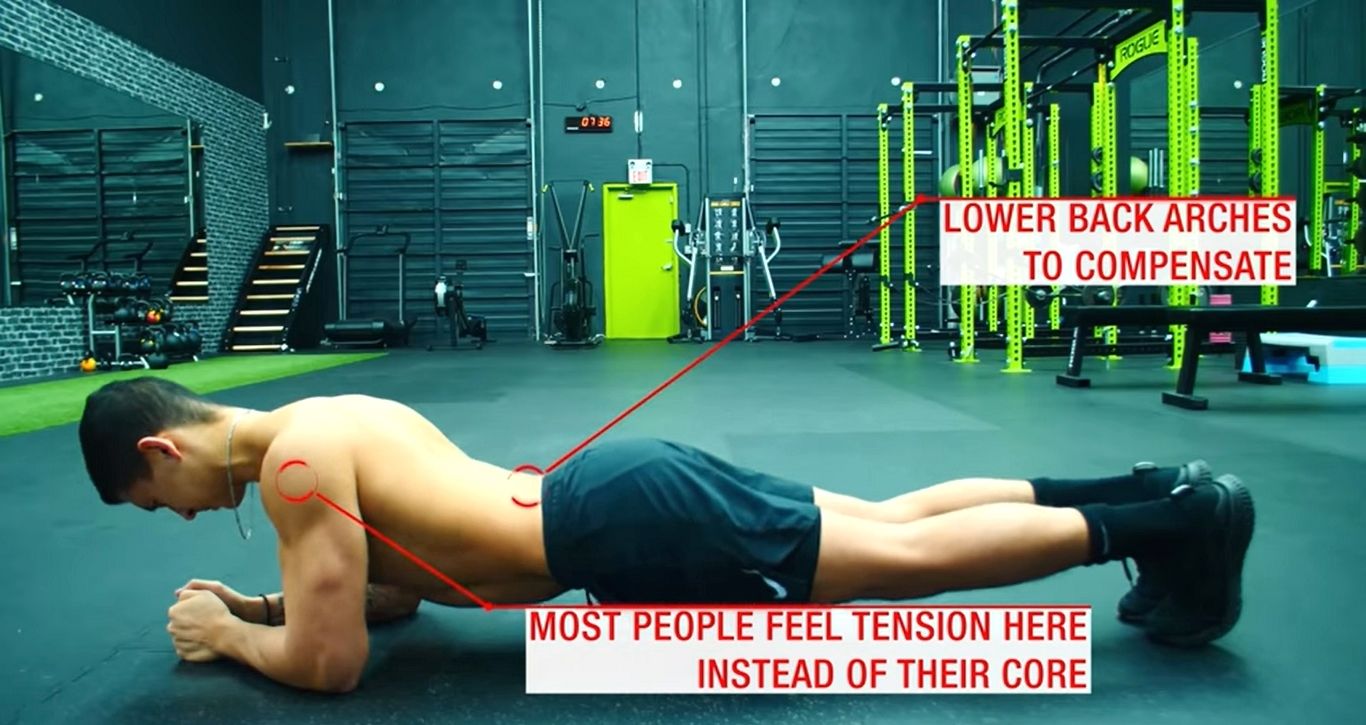The plank is a static exercise for your core, your waist. But one plank is not like the other. Experienced strength athletes can better exchange the traditional plank for a much more effective variant, the RKC plank.
CORE
The core is the core of your body, consisting of your abs (straight/oblique and transverse abs), your long straight back muscle (erector spinae), and your hips (glutes and hips).
A strong waist is vital for strength athletes. The core is the weak link in many exercises and as you know, the chain is only as strong as its weakest link.
CORE STABILITY
The term core stability refers to the extent to which the core of the body is able to keep the body in balance. This is very important for exercises such as the squat, deadlift and overhead press.
PLANK
The (front) plank is a static exercise in which you rest your elbows directly under your shoulders on your forearms and on your toes. Your hips do not touch the ground, so that your body forms a plank, as it were. Hence the name. The exercise revolves around strength, balance and endurance.
With a plank you train your core isometrically, which means that the muscles contract without contracting.
ORDINARY PLANK EFFECTIVENESS
The effectiveness of ‘planks’ is often discussed. The traditional plank is intended to keep the core under tension for a long time. But you won’t be able to penetrate really deep into the core muscles this way. They are best trained by short, heavy insulating efforts.
In addition, you often see that during a prolonged plank, the back gradually collapses, causing the lower back to bend to compensate. See image. At the same time, the tension increasingly shifts to the shoulders and other muscles for which the exercise is not intended.
 In the traditional plank, the back often slumps and the shoulders take over much of the work. (Source: YouTube/Jeremy Ethier)
In the traditional plank, the back often slumps and the shoulders take over much of the work. (Source: YouTube/Jeremy Ethier)The traditional plank therefore only seems to be a useful exercise for absolute beginners who are not yet able to hold the plank position for a long time.
BETTER: THE RKC PLANK
More experienced strength athletes can train their core isometrically much more effectively and safely by doing the so-called RKC plank. This plank comes from Russia, because RKC stands for Russian Kettlebell Challenge. That’s how the exercise was mentioned in a popular Russian fitness program. Officially it’s called long-liver posterior-tilt plank, but we’ll keep it at RKC plank for convenience.
According to a study by coaches Brad Schoenfeld and Bret Contreras (pdf), the RKC plank engages the upper and lower straight abs four times as much as the traditional plank, and the obliques three times as much. The glutes also work much harder.
IMPLEMENTATION OF THE RKC PLANK
With the RKC plank you adjust the traditional plank on two points:
1. Move your arms slightly forward so that your elbows are almost directly under your eyes.
2. Raise your body by tilting your pelvis back (posterior pelvic tilt position – see picture). That means you have to work hard on your glutes, quadriceps and abs at the same time.
A good RKC plank puts your entire body under tension for just 8-10 seconds. The RKC plank is therefore not only more effective, but also more efficient (and less boring) than the often endless traditional plank.
PROGRAMMING
The RKC plank is a pure bodyweight exercise, so the only way to progress is to increase the length of time and/or do more ‘reps’.
The exercise is very suitable as a (metabolic) finisher, for example by doing 10 repetitions of 8-10 seconds in principle with 10 seconds of rest in between.
But you can also program the RKC plank as an activator, for example by doing 3 repetitions at the start of your (abs) training with 5 seconds of rest in between.